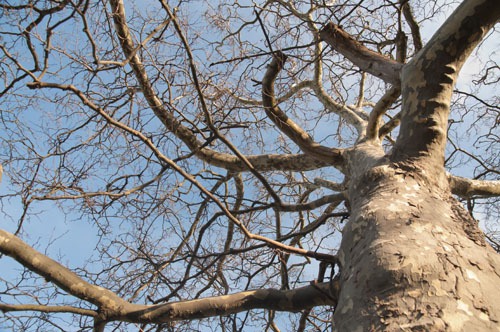Planting roots in the city
Tree program slated to start in spring
Long Beachers will see more greenery in the coming years if the city follows through on its plan to plant as many as 70 trees around town. "We absolutely, positively will be planting trees this spring," said City Manager Charles Theofan at a recent civic association meeting.
While the species of trees and where they will be planted have not yet been decided, the city is working on the selection and site choice with representatives of the Cornell University Cooperative Extension of Nassau County, a horticultural program at Eisenhower Park in East Meadow.
A community revitalization grant from county Legislator Denise Ford (R-Long Beach) is funding the program. Last April, the City Council approved an inter-municipal cooperation agreement with the county to use the $31,400 grant to purchase and plant the trees city-wide. Ford hoped the work would be done last fall, but the city postponed it in order to determine the best trees to buy and the best places to plant them.
Ford noted that throughout the county, there are many communities that have not planted the "absolutely right" tree for the type of soil and air in that particular area. "We lose a lot of trees," she said, "and we figured if we're going to do it in Long Beach, let's do it right."
Theofan said that in years past, the wrong trees were planted along Park Avenue, with branches blocking storefront signs in the business district and roots lifting and breaking up sidewalks. He said the city must plan more carefully in order to avoid those problems, using trees with branches that are non-obstructive and power-line-friendly, and with roots that grow straight down rather than spreading laterally. The trees must also be appropriate for Long Beach's soil and climate, and suited to either the more heavily trafficked roads or quieter side streets.
"There had been some talk about planting some trees in big planters on West Beech Street," Theofan said, adding that the West End was one area that would definitely see new trees. "We discussed it and concluded it would cause too much pressure on the sidewalks there. So they're going to be planted in the ground."
Bob Sympson, a vice president of the volunteer board at the Cornell Cooperative Extension and a retired science and horticulture teacher at Valley Stream South High School, said the city is "very much aware and interested" in using trees that will have little to no impact on the surrounding areas and that will live long. Sympson and Julie Seghrouchni, a horticulture educator with the Cooperative and a West End resident, met earlier this year with city officials to provide input, at no cost to the city, about its tree program. They have agreed to offer further guidance as the program moves along.
"The issue in these smaller communities and cities is that they don't have the appropriate space left for trees to grow," said Sympson, who said that the grassy medians along Park Avenue and the boulevards in the East End are ideal sites for new trees.
The Cooperative sent the city a list of suggested trees, some tall — between 50 and 80 feet — such as ginkgo, black locust and lacebark elm, possibly for the medians, as well as smaller varieties — 25 to 40 feet —including hawthorn, golden-rain, Japanese crape myrtle and Japanese tree lilac, which are better suited for side streets.
"Over the long haul, the trees that you really want to be planting, that do the most good, helping to control pollution and such, are the larger trees," Sympson said.
Seghrouchni and Sympson suggested that the city plant a diversity of species to ward off potential diseases or insects that can spread to every tree of the same variety, something Long Beach has paid the price for in the past. Phyllis Ginsberg, a city resident who is studying for her certification in master gardening at the Cooperative, said the most common tree that was planted in Long Beach about a half-century ago was London plane. Most of them developed a chronic disease that made them lose their leaves, and their thick roots ruined sidewalks.
"The fact that they planted one kind of tree left them vulnerable because the disease spread so widely," said Ginsberg, who said she is concerned about trees being planted on side streets, where the space between the sidewalk and curb is narrow, putting pressure on both a tree's roots and the concrete.
"We also need trees that can sustain a high water table but can also sustain drought because our soil ... is so sandy," Ginsberg added. "It doesn't hold as well. That's been a challenge for the city. They need a tree that can do a balancing act."
A more substantial concern, one that is common in communities that get grants for trees, is that they don't have enough money to follow through with the proper care, Seghrouchni said. At the Cornell Cooperative, she and other staff members teach municipalities and schools the proper planting and maintenance methods. "We teach them how to follow through, and types of mulch and soil they need to use to make sure they get it right, because it's an investment," she said.
Theofan said that the city is looking into applying to Tree City USA, a program in which municipalities that commit to giving trees a certain level of maintenance gain special recognition, and are given more opportunities for grants.
Comments about this story? JKellard@liherald.com or (516) 569-4000 ext. 213.

 49.0°,
Fair
49.0°,
Fair 




